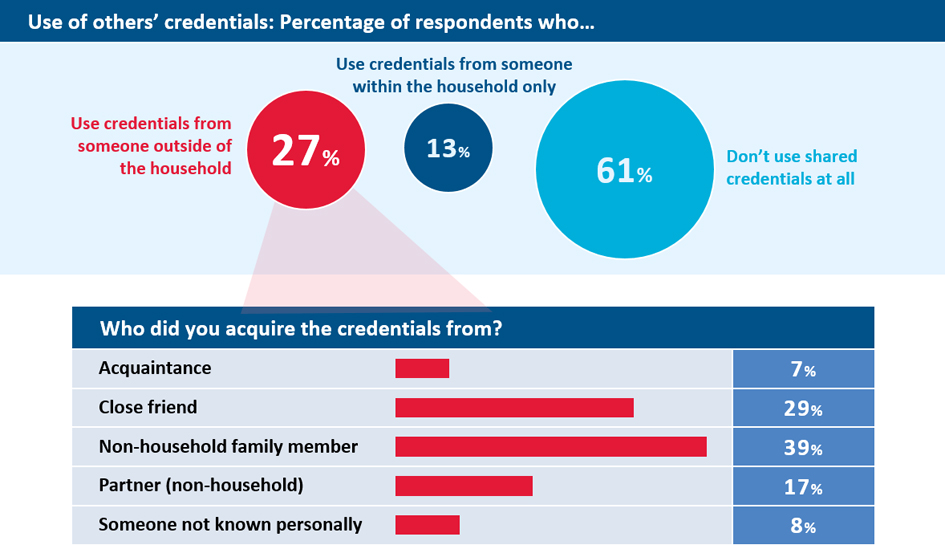How Consumers Watch Streaming Video Content for Free (Part 1 of 4)
Results from our survey on streaming video access and attitudes to account sharing
Protecting TV and video content distribution against piracy is a major preoccupation for companies within the media and entertainment sector. Over-the-top (OTT) video streaming makes content security more complex as the internet spawns new forms of piracy and ways for consumers to “freely” access content.
An area of increasing concern is credential sharing – when a viewer uses someone else’s account ID and password to access a streaming video service. Sharing passwords isn’t anything new, nor is it a surprise. OTT video service providers used the practice successfully as a marketing strategy to win viewers.
However, with increasing competition, slowing subscriber growth rates and rising concerns about personal data security, not caring about sharing is to the detriment of legitimate content distribution.
To highlight this issue, Cartesian conducted a survey to see how today’s consumers are currently accessing streaming video content and their attitudes towards sharing account credentials.
Our Survey
In November 2018, we conducted an online survey. 1,183 American consumers participated: 40% of respondents were between the ages 18-34, 42% between 35-64, and over 65s made up 16%. Under 18s were less than 2% of responses.
Our participants represent a broad scope of households where 40% live with a partner, 28% live alone, 22% with children, 15% with parents or guardians, 9% with friends or roommates, and 5% noted other living arrangements.
What Is Credential Sharing?
Not to be confused with legitimate account subscription sharing within a household, we define credential sharing as sharing account access details with someone outside of the household for which the subscription was purchased.
Key Findings
Consumers are willing to share their video streaming account credentials:
If asked by the partners, relatives and close friends they don’t live with, most consumers are willing to share their video streaming account details.

Nearly a third (28%) currently share their account credentials with someone outside their household.

Those who share their account details outside of their household tend to share with non-household family members (42%) and partners (48%).

Many consumers actively use someone else’s subscription to access streaming video:
27% access video services using account details from someone outside their household.
Of those who use shared credentials:
- 68% obtain them from a close friend or non-household family member
- 15% obtain them from an acquaintance or someone they don’t know personally

Subscription fatigue is the top reason why consumers use someone else’s account for streaming video:
However, for 27% of sharers, “ease and convenience” is the main reason.

Nearly half of sharers are willing to pay for the streaming video service:
42% of people who use shared credentials to access content would consider paying if they no longer had access for free.

In our next article (Part 2), we look at how video streaming account sharing adds another dimension to content protection efforts through the risk of the extended network. <>
> Cartesian report: How Consumers Access Streaming Video: The Risks of Credential Sharing
Referencing survey results and drawing from our work in analytics and content security, our survey report:
- Reveals consumer viewing habits and attitudes towards video services access;
- Explains credential sharing in the context of piracy and content protection;
- Defines unwanted credential sharing and its three main types;
- Examines the risk to content owners and service providers, and;
- Outlines an approach to track, stop, and prevent unwanted sharing activity, while minimizing negative impact on customer experience
Do you suspect credential sharing is an issue for your online subscription-based service? Read this case study to see how a communications services provider is tackling unauthorized account sharing. Get in touch to see how we can help.




